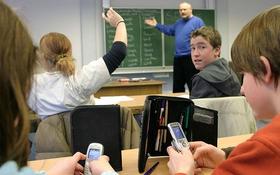Serving 492 students in grades Prekindergarten-5, Lincoln Elementary School ranks in the bottom 50% of all schools in Iowa for overall test scores (math proficiency is bottom 50%, and reading proficiency is bottom 50%).
The percentage of students achieving proficiency in math is 55-59% (which is lower than the Iowa state average of 68%). The percentage of students achieving proficiency in reading/language arts is 45-49% (which is lower than the Iowa state average of 70%).
The student-teacher ratio of 15:1 is higher than the Iowa state level of 14:1.
Minority enrollment is 79% of the student body (majority Black), which is higher than the Iowa state average of 29% (majority Hispanic and Black).
Quick Facts (2026)
- Grades: Prekindergarten-5
- Enrollment: 492 students
- Student-Teacher Ratio: 15:1
- Minority Enrollment: 79%
- Overall Testing Rank: Bottom 50% in IA
- Math Proficiency: 55-59% (Btm 50%)
- Reading Proficiency: 45-49% (Btm 50%)
- Science Proficiency: 35-39% (Btm 50%)
- Source: National Center for Education Statistics (NCES), IA Dept. of Education
Top Rankings
Lincoln Elementary School ranks among the top 20% of public schools in Iowa for:
Category
Attribute
Diversity
Percent Eligible For Free Lunch
Student Attention
School Overview
Lincoln Elementary School's student population of 492 students has stayed relatively flat over five school years.
The teacher population of 33 teachers has declined by 19% over five school years.
Grades Offered
Grades Prekindergarten-5
(Supplemental Virtual)
(Supplemental Virtual)
Total Students
492 students
Gender %
Total Classroom Teachers
33 teachers
School Calendar
School Motto
We are the Lincoln Leopards!
School Rankings
Lincoln Elementary School ranks within the bottom 50% of all 1,223 schools in Iowa (based off of combined math and reading proficiency testing data).
The diversity score of Lincoln Elementary School is 0.71, which is more than the diversity score at state average of 0.47. The school's diversity has stayed relatively flat over five school years.
Overall Testing Rank
#1078 out of 1223 schools
(Bottom 50%)
(Bottom 50%)
Math Test Scores (% Proficient)
55-59%
68%
Reading/Language Arts Test Scores (% Proficient)
45-49%
70%
Science Test Scores (% Proficient)
35-39%
63%
Student-Teacher Ratio
15:1
14:1
American Indian
n/a
n/a
Asian
1%
3%
Hispanic
11%
13%
Black
46%
7%
White
21%
71%
Hawaiian
6%
1%
Two or more races
15%
5%
All Ethnic Groups
Participates in the National School Lunch Program (NSLP)
Yes
Eligible for Free Lunch
79%
36%
Eligible for Reduced Lunch
9%
5%
School Statewide Testing
School District Name
Source: National Center for Education Statistics (NCES), IA Dept. of Education
Profile last updated: 02/09/2025
Frequently Asked Questions
What is Lincoln Elementary School's ranking?
Lincoln Elementary School is ranked #1078 out of 1,223 schools, which ranks it among the bottom 50% of public schools in Iowa.
What schools are Lincoln Elementary School often compared to?
Lincoln Elementary Schoolis often viewed alongside schools like Fred Becker Elementary School, Cunningham School by visitors of our site.
What percent of students have achieved state testing proficiency in math and reading?
55-59% of students have achieved math proficiency (compared to the 68% IA state average), while 45-49% of students have achieved reading proficiency (compared to the 70% IA state average).
How many students attend Lincoln Elementary School?
492 students attend Lincoln Elementary School.
What is the racial composition of the student body?
46% of Lincoln Elementary School students are Black, 21% of students are White, 15% of students are Two or more races, 11% of students are Hispanic, 6% of students are Hawaiian, and 1% of students are Asian.
What is the student-teacher ratio of Lincoln Elementary School?
Lincoln Elementary School has a student ration of 15:1, which is higher than the Iowa state average of 14:1.
What grades does Lincoln Elementary School offer ?
Lincoln Elementary School offers enrollment in grades Prekindergarten-5 (Supplemental Virtual).
What school district is Lincoln Elementary School part of?
Lincoln Elementary School is part of Waterloo Community School District.
School Reviews
Review Lincoln Elementary School. Reviews should be a few sentences in length. Please include any comments on:
- Quality of academic programs, teachers, and facilities
- Availability of music, art, sports and other extracurricular activities
Recent Articles

Public School Transportation & Commute Planning Guide
Learn how public school transportation and commute planning can help families prepare for the coming school year safely and efficiently.

New Public School Safety Protocols 2025–26 Guide
Learn how new public school safety protocols for 2025–26 affect students, parents, and schools nationwide.

How Technology Transforms Education in 2025
Explore how technology shapes learning today, with updated data, policy context, trends, and real-world implications for students, educators, and families.





